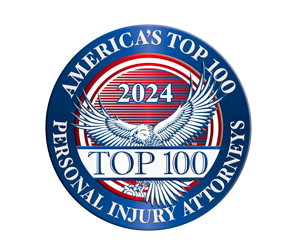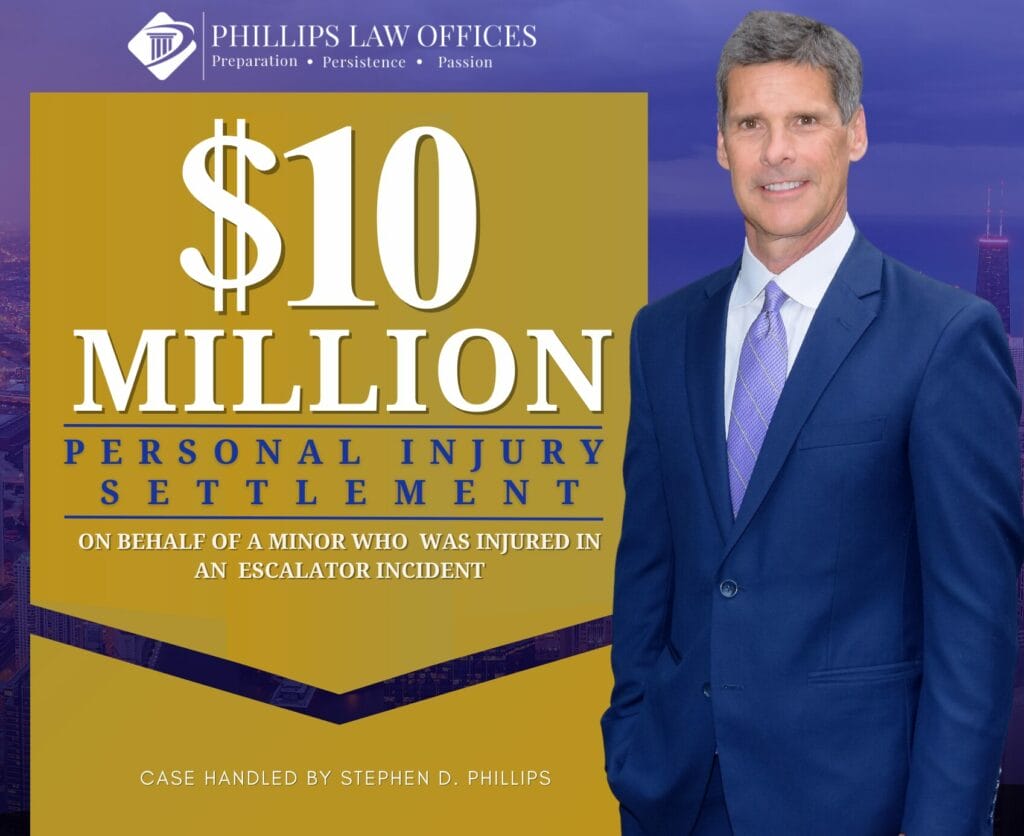From delighting sandy beaches to pleasing skylines, Chicago is home to immense beauty and charm. The windy city is famous for world-class museums, vibrant culture, iconic food scene, unique architecture, waterfront views, and professional sports teams. However, Chicago is a densely populated Illinois city, with over 2 million residents and 30 million visitors annually. According to official statistics, it has the third-highest population in the United States after Los Angeles and New York City. It’s no surprise that Chicago is notorious for its traffic jams, given its thriving economy and tourism. While traffic is evident in any significant tourism hub, knowing how to avoid it is beneficial. Whether you’re a resident, tourist, or just a driver passing through Chicago, you should know when is rush hour in Chicago.
Rush hour in Chicago is a notorious time for commuters, with densely packed streets and heightened tensions contributing to a higher risk of car accidents. During these peak hours, when thousands of vehicles congest the roads, the likelihood of collisions increases significantly. Car accident injuries during rush hour can range from minor to severe, affecting not just the physical well-being of those involved but also their financial and emotional health.
Injuries from rush hour car accidents can vary widely, from whiplash and soft tissue injuries to more serious conditions such as broken bones, traumatic brain injuries, and spinal cord damage. The sudden jolt of a rear-end collision, which is common in stop-and-go traffic, can cause significant neck and back injuries. The severity of these injuries may not always be immediately apparent, sometimes worsening over time and leading to long-term health issues and disabilities. At Phillips Law Offices, our car accident injury lawyers are well-versed in the challenges and intricacies of rush hour accidents in Chicago. We understand the critical need for swift and effective legal action in the aftermath of such incidents.
Chicago traffic rules and regulations
Getting from one place to another in Chicago can present some challenges. Before we continue, let’s discuss the traffic laws governing this bustling city. The traffic laws are equivalent to those in other states and cities. But there are a few crucial points to keep in mind while traveling around the city:
Speed limitations
The maximum speed limit for interstate highways outside urban areas is 70 mph, 65 mph on rural interstates, and 55 mph on interstates near or in major cities. In urban areas, the speed should not exceed 30 mph. Police may use speed detection devices to monitor drivers.
Cell phones
Using a hand-held cell phone while driving a vehicle is illegal in Chicago. It includes using other electronic communication tools like laptop computers or personal digital assistants. However, you can use Bluetooth or hands-free gadgets.
Construction zones
Lane closures are necessary for some work zones. So, you must stay vigilant in case construction-related work requires you to slow down or stop due to construction work. When merging with the alternate lane, give way to authorized drivers and workers.
Emergency vehicles
You might see emergency vehicles like police cars, ambulances, and fire trucks on the road. If an emergency vehicle approaches, you must pull over your conveyance to the side of the road and allow it to pass. Even if it stands parked, slow down and proceed cautiously. Using a cell phone or taking pictures within 500 feet of an emergency vehicle or an area where staff works are not permissible.
Drink and drive
Alcohol is the leading cause of death on Chicago’s highways; digital signs on the road warn you of the rising death toll. Blood alcohol levels must be less than 0.08 grams. Otherwise, you risk paying fines, jail time, and license suspension.
Toll payments
Many highways in Illinois, including the Chicago Skyway, have tolls. If you don’t have any change or cash in hand, you can pay online within seven days. You need to remember the toll plaza or mile marker number to determine how much you owe and where you were when you missed the toll. Though you can also pay via mail, it is not the preferred mode as it could cause delays.
Reckless driving
Unless otherwise indicated, you can only turn right when the light is red and only after coming to a complete stop. Many red lights and speed enforcement devices have cameras that will track those who violate traffic rules. Risky driving behaviors include speeding, cutting off other vehicles, honking, yelling, slamming on the brakes in front of a tailgater, and other aggressive actions. Avoid engaging the aggressor, leave room for passing, lock your doors, and roll up the windows.
Typical rush hours in Chicago

Navigating your way around the city is simple, thanks to the grid-like arrangement of the streets, which run from north to south and from east to west. However, the Illinois expressway experiences traffic jams daily because drivers from the suburbs use the expressways to get in and out of the city. The worst times for traffic are typically between 6 and 8 am and 4 and 6 pm, with afternoon traffic on Thursday and Friday being excessive. Factors like construction, bad weather, population, and traffic accidents also contribute to road congestion.
Traffic around sporting venues and arenas gets heavier on game days. You could find heavy traffic and limited parking throughout the day during sporting events, festivals, and concerts. For instance, the areas around Wrigley Field and the Wintrust Arena are frequently the busiest before, during, and after major sporting events. Additionally, the city’s traffic worsens during the summer due to increased construction, tourism, and the end-of-year school period. Depending on when you are on the road, timing can vary significantly. However, the best times to drive on Chicago roads are 5 am and 2:30 pm before the morning and evening rush hours.
Key to escaping rush hour traffic
Traffic congestion in Chicago varies according to time, location, and season. You can expect a heavy rush between 6 and 8 in the morning and 4 and 6 in the evening. Moreover, you could find gridlock on crowded expressways, during holidays, and on game days. Before you start your drive in Chicago, always check the most recent traffic reports, particularly if you have a long way to go. Here are a few tips that can help you to know when is rush hour in Chicago and make your journey easier:
Leave late or early
Going before or after the morning or evening rush hour will help avoid the worst traffic periods. For instance, leave at least 30 minutes earlier than your scheduled time if you must travel on the Kennedy Expressway, West Roosevelt Road, or any other congested highway.
Seek short ways
Avoid taking detours if you commute every day because they might increase traffic. Instead, find the easiest and quickest route to your destination. For example, North Lakeshore Drive (US 41) connects West Fullerton and North Cameron Drive. When the expressways are congested, most drivers will take this route.
Take public transport
The traffic congestion in Illinois city is not going away anytime soon. Consider taking public transportation to and from work to avoid spending hours in traffic daily. In this way, you can escape driving on busy roads during sports events, holidays, or summers. The best way to navigate the city center is to take one of the Chicago Transit Authority’s (CTA’s) “L” rapid transit trains.
Familiarize with roadmaps
The grid-like pattern of most Chicago roads makes navigation relatively simple. However, unforeseen accidents or road work could detour your intended route. Knowing about the road layouts will help you quickly get back on course if you need to find another way to your destination.
Significant tips for driving in Chicago
Despite the traffic issue, driving in Chicago is generally safe and manageable. However, familiarize yourself with road layouts to find an alternative way soon if stuck somewhere. Now that you know driving in one of the busiest cities in Illinois is challenging, here are other significant tips to keep in mind:
- Be aware of one-way streets, road signs, and traffic signals.
- Watch out for pedestrians, cyclists, and e-scooters sharing the road with you.
- Pay toll fees within seven days to avoid additional fees.
- Make sure you have adequate insurance coverage in case of a rush-hour accident.
- On icy roads, slow down and extend your following distance to prevent collisions with other cars or objects.
- Consider using public transportation, riding bicycles, or walking to avoid road hassles.
- Be assertive and proactive when entering or leaving the freeway.
- Renting a car provides you with flexibility and access to transportation when needed.
Probability of rush hour accidents
When is rush hour in Chicago, is the period when traffic is at its peak Drivers often act aggressively during these times of congestion to reach their destination faster. In other instances, bored motorists stuck in traffic use their phones or engage in things that cause distractions when driving. As a result, even if drivers are aware of dense traffic, an unexpected event can occur. More vehicles on the road increase the risk of severe accidents, including multi-vehicle collisions. Rush-hour stress may prevent drivers from acknowledging the condition and exercising caution. When a reckless or agitated driver causes an accident, the victim can hold them accountable through a personal injury claim.
If you sustained injuries in a rush hour accident, contact an experienced personal injury lawyer immediately. After a rush-hour collision, injured parties will probably need to prove that the other driver was at fault to pursue damages.
It requires establishing that the defendant violated their obligation to drive with reasonable care. Besides ascertaining this, your lawyer must show that the breach directly contributed to the rush-hour accident and the plaintiff’s injuries. Knowing when is rush hour in Chicago can help you to prevent accidents.
Contact Our Attorney for Rush Hour Accident Injury Lawsuits
Contact our proficient car accident lawyer Chicago at Phillips Law Offices. We will examine the pertinent details of your case and work with you to identify the precise amount that would be appropriate. A plaintiff may obtain economic, non-economic, and punitive damages after successfully proving negligence. It covers all costs associated with the accident, such as lost wages, disability, pain and suffering, rehabilitation costs, and any additional expenses related to the accident.
In some circumstances, demonstrating future costs may require expert testimony, such as vocational rehabilitation specialists. Professionals know how to assess potential earnings lost because of a crash. We understand that financial security is essential for victims. They may have to undergo expensive medical treatment and care after the accident. In your case, we will fight tenaciously for full and fair damages. For free consultation contact us now at (312) 598-0917.
Also Read:
Hand Injury From Car Accident: Types & Average Settlement Values






